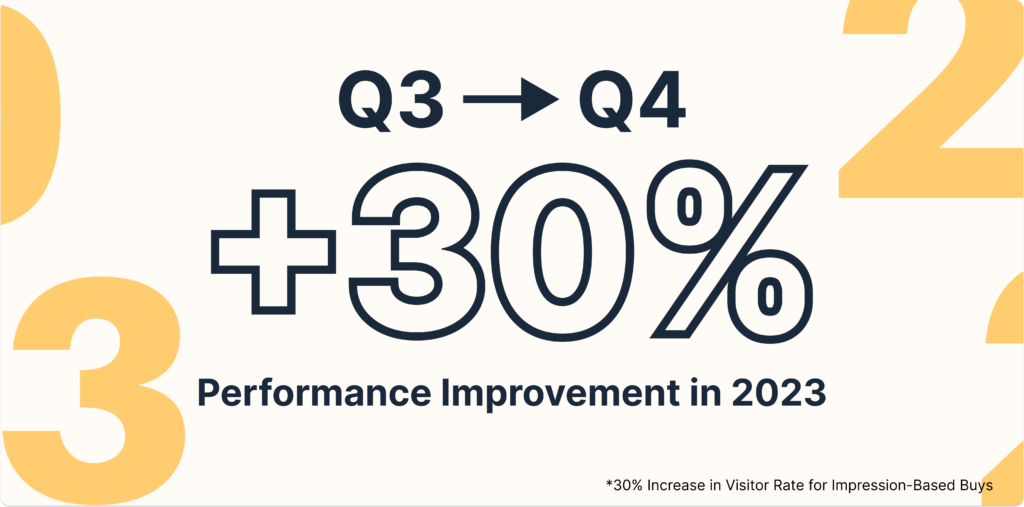This Week in the Business of Podcasting
Whether you partake of American football or kept the TV off last Sunday, the Super Bowl is a force to be reckoned with in advertising and we’re kicking off today’s issue with a grab-bag of news about how that impacted podcasting. Let’s get started.

Greater Trust. Greater Transparency. Better Performance.
Super Bowl Advertising News Roundup
This past Sunday the biggest game in American football happened, an advertising highlight of the year. For our first story of the day, we’re collecting all the news highlights surrounding the Super Bowl.
First up, the power of build-up. According to Edison Research’s Q4 podcast metrics, New Heights with Jason and Travis Kelce is the podcast Cinderella story of late last year. The podcast, hosted by two brothers playing for different teams as they discuss life in the NFL, rocketed from 67th place on Edison’s rankings in Q3 to 6th place in Q4. What changed in that time? Travis Kelce began publicly dating pop idol Taylor Swift, causing a flood of infamously passionate “Swifties” to become dedicated listeners of New Heights. A new injection of listeners so powerful the audience makeup of the comedic football chat show is now 50% female.
Last Friday, Alyssa Boyle of Ad Exchanger wrote on how this year’s game would be all about reaching Gen Z. The classic Super Bowl demographic of people only watching for the ads might be hitting a generational divide.
A report from Adtaxi found a higher percentage of respondents were anticipating watching the actual game, with ad-interested respondents only making up 25%, in contrast to 24% last year. That said, it is worth noting that similar to New Heights, the shadow of Taylor Swift loomed over the game as Swifties had the dramatic appeal of Travis Kelce’s team playing. In addition to pop star fandom, younger viewers had a new take on football as Paramount+ streamed a Nickelodeon-themed simulcast hosted by live-animated Spongebob Squarepants characters.
The biggest uphill battle for Super Bowl ads, however, is Gen Z’s lack of interest in traditional advertising. For a podcast perspective, we went to Gen Z Media’s CEO and co-founder Ben Strouse, who had this to say: “What we’ve seen is that Gen Z-ers respond to advertising that in some fashion speaks to them directly.” Strouse says podcast advertising is especially effective with Gen Z due to the medium’s emphasis on intimacy and authenticity, qualities Gen Z actively seeks.
Which leads us to our final segment of our Super Bowl roundup: Pepsi’s involvement (or lack thereof) in the game itself. According to Marketing Brew’s Alyssa Meyers, Pepsi has taken a step back over the past two years, no longer sponsoring the halftime show and this year electing not to run an ad during coveted Super Bowl commercial breaks. Instead, Pepsi focused on running its “Get Wild” campaign for cherry-flavored Pepsi everywhere it could in relevant locations around the Super Bowl. For a podcasting perspective, we asked Cameron Hendrix of Magellan AI what Pepsi has been up to in podcasting recently.
“Pepsi’s “Get Wild” campaign also launched on podcasts in the week leading up to the Super Bowl – Magellan AI detected pre- and mid-roll spots on more than 100 podcasts during the week of 1/29.” While the Super Bowl itself is a prestigious moment in advertising, podcasts are in the ears of die-hard fans, and as The Medium Moves the Message found last year, those audiences have a tendency to support brands that sponsor their favorite podcasts.
Brands like Pepsi take full advantage of the perfect storm of sports fandom and podcasting’s advertising powers by increasing spend in the run-up to major events like the Super Bowl.
Branded Content Became Top Category for New Ad Product Growth in 2023
This Tuesday from Julia Tabisz: A new Digiday survey studies the responses of over 300 publishing professionals in Q4 of last year. Of those surveyed, 56% grew their ad products last year, with a good portion of that growth being attributed to branded content. 58% of respondents said their companies added branded content this year, making it the top category of new ad product added last year for respondents.
For a podcast perspective we reached out to Shannon Martin, Podcast Strategist at Lower Street for comment.
“We continue to see growth both in use of branded content and in greater sophistication in how it’s being deployed. That trend appears set to continue as evidenced by the overwhelming response to our recent Brand Podcast Summit, both in terms of attendance and engagement. 37% of attendees were directors or higher level managers, and 21% were company founders; 65% had existing branded podcasts they were adding to or growing, and the rest intended to launch a brand podcast this year.”
Branded content is no new addition to podcasting, but in recent months the industry has become more vocal about its capabilities. And on the subject of the Brand Podcast Summit, Lower Street will be hosting the next iteration on April 24th of this year.
The Subtle Key to Podcasting’s Persuasiveness
This Wednesday from Tom Webster on Sounds Profitable: The power of a podcast host’s ability to connect with audiences is often talked about as one of podcasting’s strengths, but rarely is it broken down into the components that make up the whole. A podcast host can be charismatic, knowledgeable, or entertaining, but those qualities aren’t unique to the industry. Any given favorite YouTuber or linear TV host can easily have those features. Webster proposes one key factor podcasting particularly engages with is one of empathy.
A particularly strong case of this is the recent success of Body Electric, a short podcast series produced by NPR and hosted by Manoush Zomorodi. The core premise itself is an experiment: can a podcast get people to physically move more? Podcasts can sell mattresses, websites, and meal kids, but can it combat sedentary lifestyles that have become far more prevalent since COVID lockdowns? For the experiment, Body Electric partnered with Columbia University Medical Center to run a study with volunteers in the audience.
Over 20,000 respondents registered for the study, logging the amount of walk breaks they took daily and reporting both fatigue and emotional states throughout the experiment. Fatigue reduced 25% and the data showed the more respondents moved, the better they felt. Manoush described the community that formed around the podcast and study as a feedback loop between the show and its listeners. A quote from Manoush:
“I think it does come back to talking to people about problems they’ve sensed they had, but couldn’t put words to. When you are able to explain to someone through a story, or reporting, or just talking in conversation… if you are making the listener think like, Oh, my God, that’s exactly how I feel. Thank you. Yes, yes, that is it…this sort of moment of feeling seen, ironically, by a podcaster. That’s a connection that they will be very loyal to if they feel understood by you.”
Empathy is a powerful tool. If the audience believes the host is on the same journey as them, the audience is more likely to take that first step, whether a literal one in the case of Body Electric or something more. As Webster says in his conclusion:
“Let’s embrace this opportunity and make every word count…with a little empathy. Surely that’s not a bad thing.”
Quick Hits
While they may not be top story material, the articles below from this week are definitely worth your time:
-
Acast expects short-term impact on listens from Apple update by Ella Sagar. The Q4 financial report for Acast reflects a decrease in podcast downloads that the company attributes to the iOS 17 update back in September. That said, Acast believes the long-term change will be a net positive for the industry as the strength of the download metric is reinforced by said update.
-
Slate reports best year by Max Tani. In the company’s 27 years of business, Slate reports 2023 was their most profitable year and podcasts made up 50% of their ad revenue for the year.
-
Authentic Multicultural Narratives Create True Diversity in Audio Advertising by Antonio Francisco Lewis. To avoid falling into stereotypes or over-reliance on ethnolects when targeting multicultural audiences, advertisers working in audio need to ensure creative directors with relevant backgrounds are involved on the project to give authenticity.
-
The Value of Measuring the Upper Funnel by Paul Riismandel. Direct response marketers tend to jump past the first few levels of the marketing funnel, but it’s important to remember lower-level marketing tactics works best when leveraging awareness built at the top of the funnel.
-
The Creator Economy: Boom Not Bust by Ross Adams. The Acast CEO discusses the growing creator economy and how marketers can properly take advantage of it.








































































































































































































